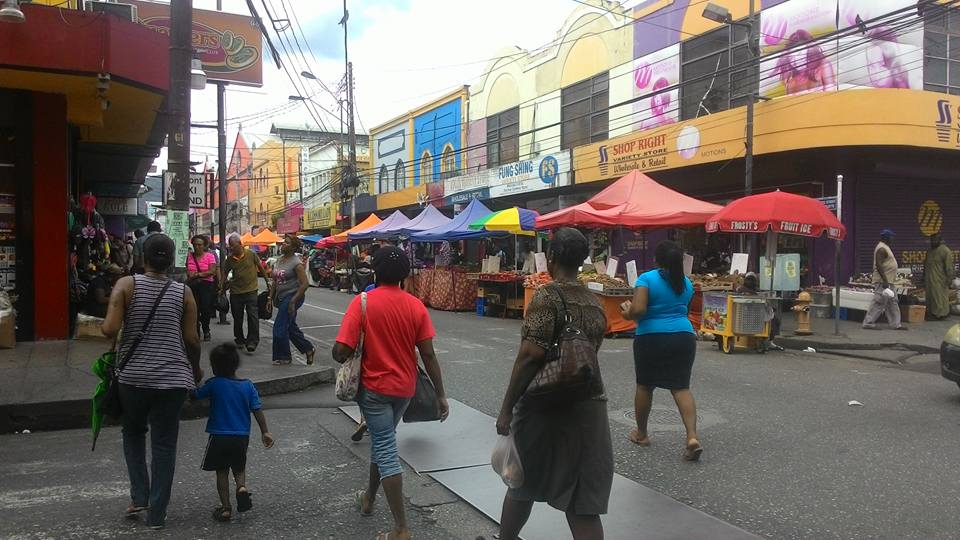Trinidad and Tobago, Port of Spain
FC-01x Future Cities (Self-Paced) - Exercise 1 : "Making the Invisible - Visible"

Uploaded on 2016-11-21 by Jesse Francis
This picture was taken from the corner of Charlotte Street, one of the business streets, in the heart of Port of Spain. The visible information shown in this picture include: 1) Commercial activity: There are a number of market vendors on the right of the road, informal street vending on the left of road and numerous large commercial businesses in the buildings. 2) The Utilities: Power grid and Fire hydrant 3) Pedestrian based information: The pedestrian traffic and density of this moment in time 4) Environmental conditions: Amount of liter 5) Urban Landscape: Road and sidewalk size and conditions 6) Transportation: There is a taxi stand located on the left of the street (the sign indicating this is being block by a electrical post) Two invisible information that can be extracted out of the visible information in this picture are the eating patterns/ purchasing patterns/ demand of fruits and vegetables that taken be sourced from the various vendors on this stretch of food and the transportation demand and supply for this transport station (Taxi stand). The invisible information of the eating patterns or crop demanding that can be extracted from the market vendors can be used as knowledge and contributing to the planning of more livable urban space through the creation of an demand and supply network for farmers in the hinterlands. The information gather could be turned into knowledge of the average demand for crops which allows farmers to produce more precises yield of crops hence reducing any wastage of resources and the changes in the demand for crops throughout the year either based on season or festivals. The knowledge obtain about demand can help contribute to a more livable urban space as it allows for long term and progressive planning for the nutritional needs of the city dweller, therefore maximizing the accessibility of resources within the city while minimizing wastage of goods.